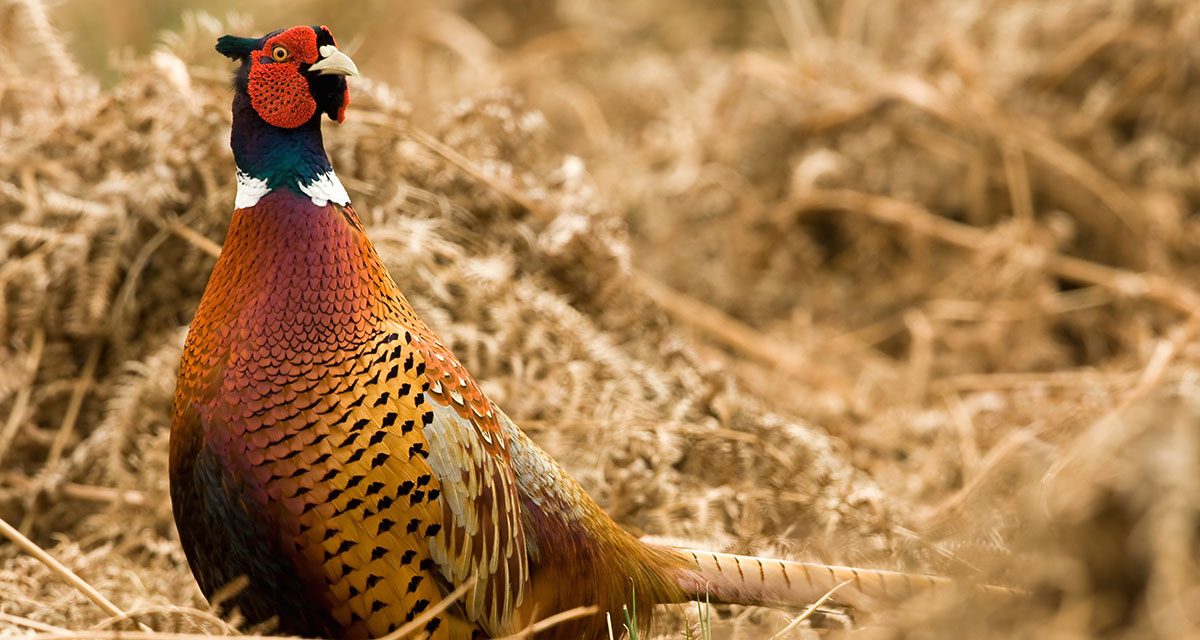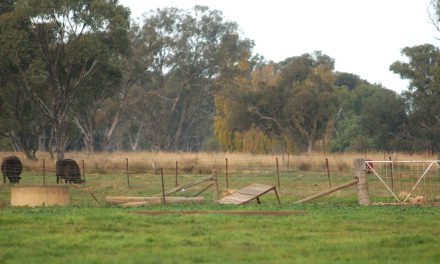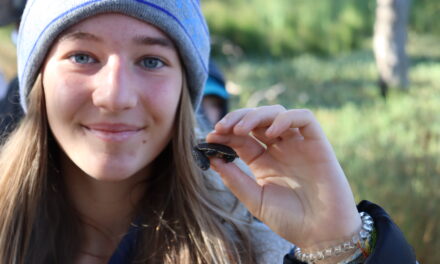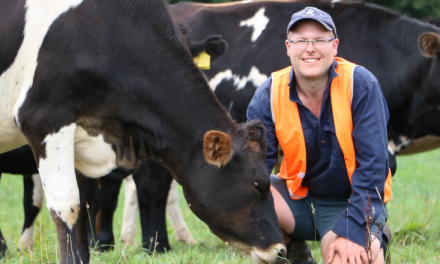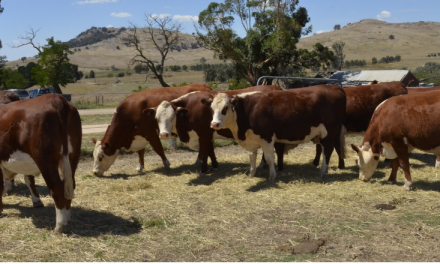Game birds bring challenges and rewards
Rearing game birds can be challenging, but for enthusiasts, a bouquet of pheasants or a covey of partridge is both a rewarding and sometimes, remunerative, pastime.
There are almost as many ways to rear game birds as there are game-rearers the world over, and it is nigh on impossible to prescribe exactly what feed to use, the size your pens should be or the ‘best’ bird type. There are books on the subject, practical courses and importantly, unbeatable experience to be gained from working alongside industry experts.
Ondra Pheasants’ Stuart Bowd has been rearing game birds on his farm at Strathdownie, Western Districts, Victoria, for 18 years. He started out with 12 hens, and now runs 65 to 70 hens and 12 cock birds.
Each year from May until around August, shooting parties are invited to attend a select number of walk-up shoots on carefully prepared and reared pheasants and when available, partridge.
Stuart says raising game birds is an equally enjoyable and frustrating pastime.
“Pheasants are one of the most finicky animals to breed. The survival rate from hatching to weaning can be hit hard for little to no reason some years – and even as mature birds, they need to be closely monitored as they can get bored and attack each other, resulting in injury and death.”
Stuart’s 65-70 pheasant hens lay about 45 to 50 eggs a day for seven to eight weeks a year, after a 10-week joining period.
Eggs are collected at least once a day – twice daily when the weather really warms up.
After they are graded for shape and size, they are put into an incubator, where they spend 23 days until hatching occurs.
“If you can get a survival rate of 60 to 70 per cent you are doing well. The first week after hatching is the time when most losses occur, usually through young birds not taking to their feed,” Stuart explains.
Partridge are particularly sensitive to the cold, but pheasants are somewhat more adaptable. When young, however, it is important to keep the temperature moderated in their boxes, says Stuart.
“They can tolerate heat well, but they don’t like the cold when young.”
Stuart’s pheasants are kept in enclosed shedding for the first five to six weeks of their lives, before being weaned into enclosed pens where they are rotationally run thereafter.
“During this phase, it’s important to keep age groups together and not mixing older birds with young stock. Older birds will dominate and invariably kill young birds, especially when there is little cover or materials in which to hide or graze on in their cages. Boredom is a big factor, and males particularly will turn on other birds when bored.”
Feeding the right protein balance is important, and will go some way to moderating behaviour of birds, explains Stuart.
“Often, I will put a small square hay bale in the pens with weaner birds; this way, they can work away at the twine and gradually unpack the hay. It provides a pastime for them as well as cover,” he adds.
Observing game bird behaviour is one of the most intriguing and interesting aspects of rearing, according to breeders.
“The birds are endlessly fascinating,” says Stuart, “their behaviour can range from highly social and outgoing or playful, to alert and protective when they sense danger. I once noticed the latter and looked skyward to notice way off in the distance, a wedge-tailed eagle soaring above. Another time, the birds’ behaviour around me changed when I didn’t wear my usual work hat into the pens – they saw me as a stranger.”
One of the most enduring appeals of game bird rearing, says Stuart, is the fact the birds have never lost their wild and natural instincts.
“You can never completely tame pheasants; you may come across the odd one that will come back to you and be happy enough to stay around the yard, but for the most part, birds released will be effectively wild after three to four hours in the open.”
In Australia, the predominant game birds raised for meat, sport or hobby include guinea fowl, partridge, pheasants, squabs, and quail. Except for quail, they are seasonal breeders and none are indigenous to Australia.
According to the Rural Industries Research and Development Corporation, quail is the largest game bird industry in Australia with 6.5 million quail harvested in 2011-12, with a value of more than $35 million.
Game birds are produced for meat for human consumption, and in the case of quail, for egg production as well. The demand for all game birds produced for meat, except for quail and squab, is seasonally based, with Christmas and Easter being the peak sales period domestically.
Pheasants, partridges and guinea fowl are often farmed together, as an enterprise within a farming business. Quail are often farmed independently of other game bird species due to their different management requirements; it is the smallest species of game bird farmed in Australia, but the largest by volume. Geese are predominantly produced by backyard enthusiasts, who have historically supplied birds to small processors, and geese production is not a commercial or structured industry in Australia. Generally, pigeon (squab) farms are small, family-run enterprises, which typically supplement income from other farming enterprises (such as cropping) or other income sources such as a part-time job.
Optimum climates
Most game birds are produced in well ventilated or climate-controlled sheds with outdoor runs. They do well in a range of climates, particularly the southern temperate regions and areas of natural advantage such as Tasmania, with limited predators and favourable habitats.
Sourcing stock
Specialist breeders can supply stock to people wanting to enter the game bird industry. Alternatively, potential industry entrants can seek to become growers for larger processors and will be provided with stock to ‘grow out’ under contract.
Health care
Game birds tend to be subject to the same external parasites as poultry: lice, mites and ticks; and internal parasites, like roundworms, are fairly common.
Pheasants, partridge, guinea fowl and geese are hardy birds and usually are not affected by severe outbreaks of disease. An on-farm hygiene program will help keep disease outbreaks to a minimum:
- avoid dampness;
- clean pens frequently;
- apply fresh litter or sand to the floor of the sheds; and
- isolate diseased birds from the rest of the flock.
Infrastructure requirements
Infrastructure requirements will vary depending on the species of game bird produced, and the farming system used. However, infrastructure needs will tend to include a combination of sheds, aviaries or netted pens.
New entrants tend to convert older style buildings, including garages, old shearing sheds and ex-laying hen sheds for housing, however larger processors have purpose-built, climate-controlled sheds with separate areas for egg storage and incubation, brooding, breeding and growing. Larger breeds of game bird are usually provided with outdoor runs.
Processing
The processing of game birds involves slaughtering, plucking (waxing if necessary to remove fine down), evisceration, washing, chilling or freezing and distribution.
The age at which pheasants are processed will depend on the weight required by the market. For example, restaurants require birds with a live weight of approximately 1.2kg, which should be reached at 16 weeks of age. If not, birds may have to be kept one or two weeks longer, and the costs of production will be greater.
Partridges are grown for approximately 14 to 16 weeks and then processed. Like pheasants, the weight of the bird dictates the time of processing more than bird age.
Guinea fowl are usually processed at approximately 20 weeks and are provided frozen in weight categories that range from 850g to 1.2kg. Baby guinea fowl (400g to 600g) and various carcass portions are also sold.
Quail are farmed for meat and eggs. Meat birds are usually harvested between five and six weeks of age, while eggs are collected on a daily basis.
Geese can be processed at two stages; as ‘green geese’ at 10 weeks of age when they will weigh about 4.5kg, and at six months of age when they will weigh about 8kg live weight.
Squabs are usually ready for processing at about 28 days of age.
Regulatory considerations
If planning an intensive operation, or planning to raise a large number of birds on a property, growers will be subject to the same regulatory approval processes that apply to poultry farming. State departments of primary industries can assist new entrants understand the planning, environmental and welfare standards required to gain approval to operate.
Producers should ensure they understand and implement good biosecurity practice on farm. The National Farm Biosecurity Manual – Poultry Production provides a solid foundation for best practice on game bird farms.
Some bird species are restricted in certain states and territories; so, seek advice from the relevant state department of primary industries to ensure compliance with applicable laws.
Wild populations of some species are a problem in some parts of Australia and are subject to control by state rangers. If farming free-range game birds in particular, ensure they are contained within the farm property, well housed and well fed to limit the chances of escape.
For more information:
The World Pheasant Association, responsible for conservation interests of pheasants worldwide, is represented in Australia through the Pheasant and Waterfowl Society of Australia.

